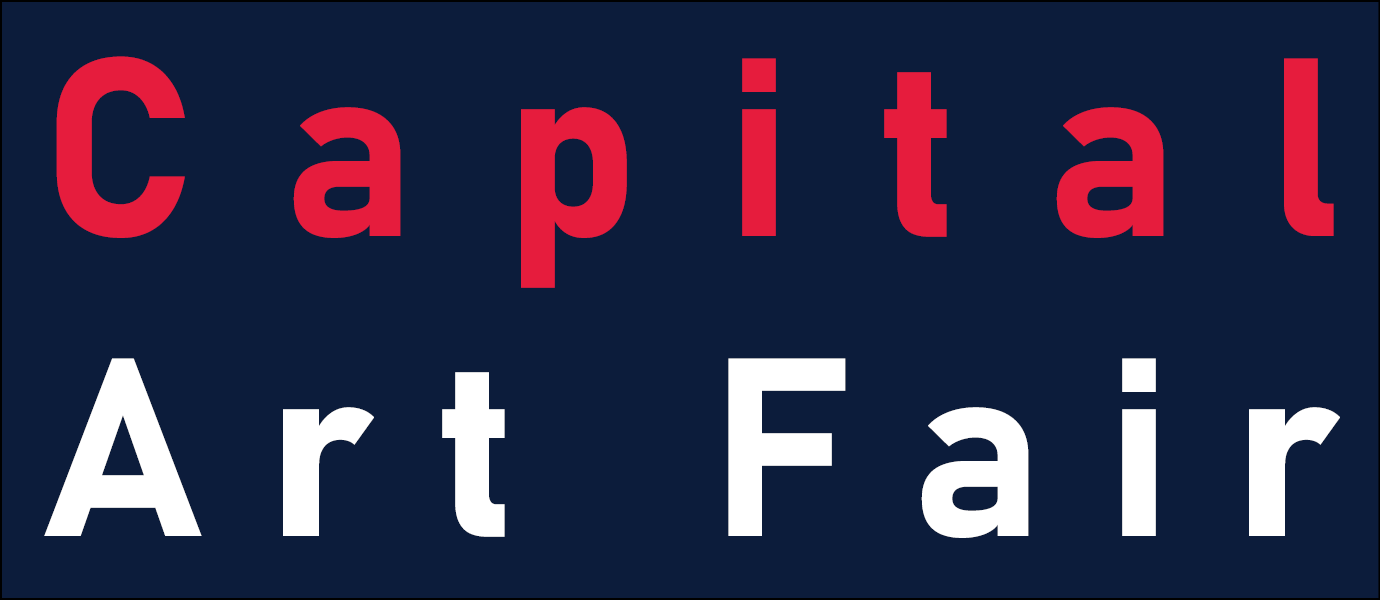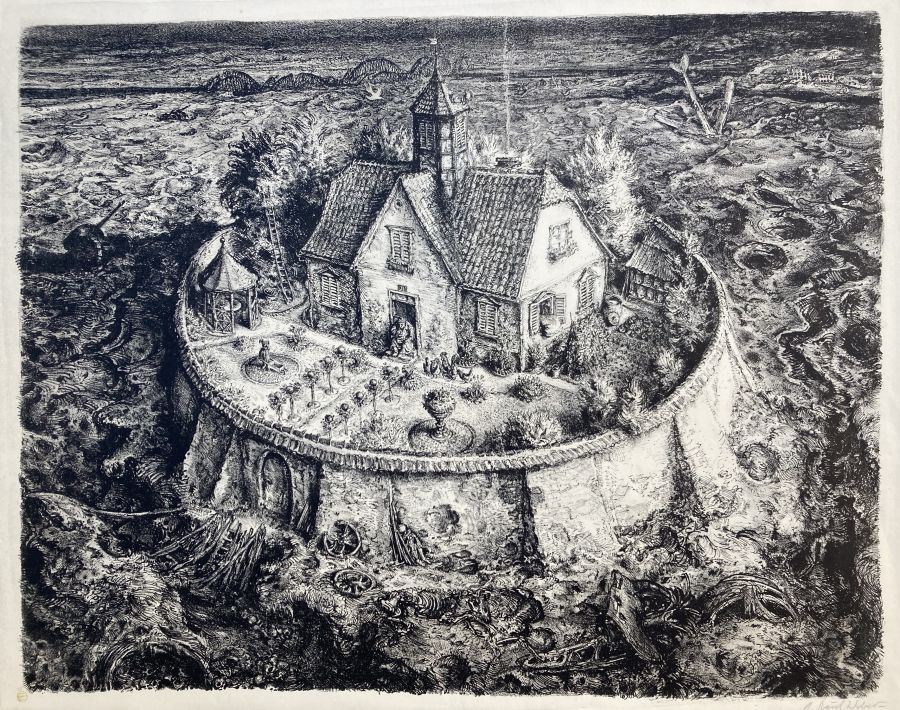ANDREAS PAUL WEBER (German 1893-1980)
THE LAST PRIVATE PERSON - DER LETZIE PRIVATIER
Lithograph signed in pencil and with the artist's Clan Press Stamp lower left corner. Very good impression, brown tint stone with the outline border tone printing clearly. Image 18 1/2 x 23 1/8 inches, sheet 22 x 28 inches.
In good condition a few soft creases in the large sheet. Repaired tear upper margin to the printed border.
A MAN SITS ON HIS PORCH WITHIN THE CONFINES OF HIS WALLED ESTATE AND THE WORLD AROUND IT HAS BEEN DESTROYED!! - POWERFUL STATEMENT ABOUT WAR AND ALL ELSE THAT WILL RAVEGE CIVILIZATION.
The A. Paul Weber Museum was inaugurated in Ratzeburg in 1973. Andreas Paul Weber died on 9 November 1980. This important German lithographer, draughtsman and painter bequeathed a comprehensive œuvre, in which critical satirical works figure prominently.
THE WEBER MUSEUM HAS ADDITIONAL INFORMATION AND A BIOGRAPHY
The following is a biography taken from the prominent German auction house KETTERER /KUNST:
"Andreas Paul Weber attended secondary modern school in Arnstadt between 1903 and 1910 before briefly attending the School for the Decorative and Applied Arts in Erfurt. In 1908 Weber joined the 'Jungwandervogel', a movement which sought to develop a new, modern lifestyle based on walking and living close to nature. At the same time Andreas Paul Weber began experimenting with lithography and worked as a commercial artist. When the first world war broke out, Weber served as a railway engineer on the Eastern Front, where he worked for the army as a draughtsman from 1916. After the war Andreas Paul Weber illustrated numerous books, including Till Eulenspiegel, Reineke Fuchs and the critical contemporary work Der Zeitgenosse by Hjalmar Kutzleb, which were Weber's first successes. In 1925 Weber founded the 'Clan-Presse' ['Clan Press'], where he and his son Christian printed seals, ex libris labels and commercial graphics. In 1928 Weber joined the 'resistance circle' against the growing threat posed by National Socialism. Between 1931 and 1936 Weber and Ernst Niekisch published the journal 'Widerstand' ['Resistance'] and Weber also did satirical political illustrations and book illustrations for the 'Widerstands-Verlag' publishing house. Weber settled at Schretstaken near Mölln and became acquainted with Johannes Böse, who was head of the 'Griffelkunst-Vereinigung' in Hamburg. However, Weber was arrested by the Gestapo in connection with general persecution of the 'Resistance Circle' and sent to Hamburg-Fuhlsbüttel concentration camp. He was later imprisoned in Berlin and Nuremberg. There he permitted to draw, provided his work was apolitical, and he did his first 'Schachspieler' ['Chess Players']. After a trip to Florida in winter 1938/39, Weber became a regular contributor of lithographs to the 'Griffelkunst-Vereinigung', for which he had done one hundred and fifty lithographs by 1980. In 1939-41 Weber did the 'Leviathan' and 'Reichtum aus Tränen' ['A Richness of Tears'] cycles, which were published by the Nibelungen Verlag in Berlin as 'Britische Bilder' ['British Pictures']. Weber was called up to serve in the second world war. After the war he again did critical lithographs dealing with contemporary themes and also worked at the satirical magazine 'Simplicissimus' from 1954 to 1967. Increasing recognition came to Weber's work: in 1951 the 'Griffelkunst-Vereinigung' founded an 'A.-Paul-Weber Circle', which also made him financially secure; in 1955 Weber was awarded the Schleswig-Holstein Art Prize and, in 1963, the Hans Thoma Medal. In 1971 he was officially designated professor and decorated with the Grand Federal Service Cross. Weber showed his work at numerous large international exhibitions."



